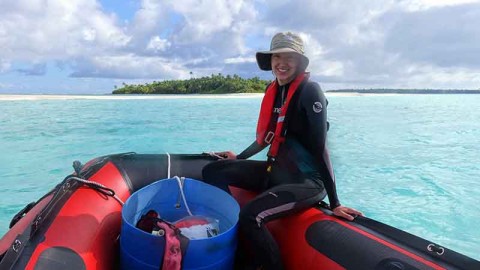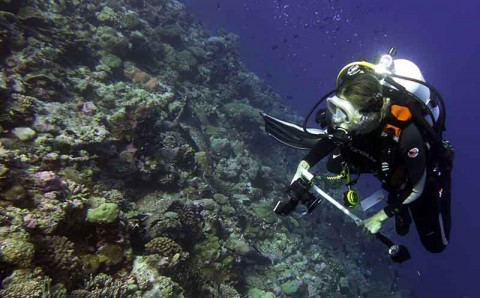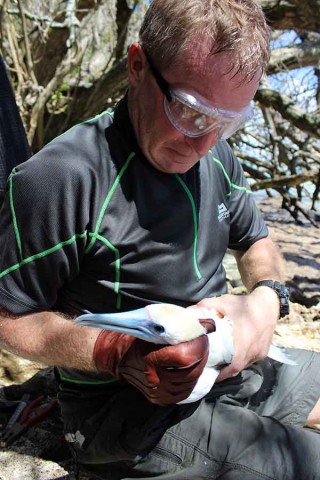BIOT Science Expedition 2014 - Getting to work… Day 2
Getting to work...
The crew of the BIOT Science Expedition 2014 gathered on the deck of the BIOT Research Vessel.

Today we got to work. As if that isn’t what we’ve been doing for the last few days already but now we are getting to the tasks that we have all been working towards. The science and data collection. I’ve been dive buddying Elizabeth throughout the day and here are a few words from her.

“Today I have been taking photos of the coral communities around the northern atolls of the Chagos Archipelago. I take photos of the reef and also record the exact location and depth at which each photo is taken. Since GPS devices cannot receive signals underwater, we attach it to a flotation device which we drag along and then later match up to photos using specialized software. Later, back in the UK I will analyze these photos, determining what coral species are present in each image and what type of environmental conditions exist at the particular location at which they are located. I will then take a rather unusual approach to understanding how the reef ‘functions’ by translating the coral species composition into life-history trait composition. These traits describe among other things coral morphology (i.e. shape, size), reproductive behaviour, and aggression towards neighbouring corals. By focusing on traits we can gain insight into not just the diversity of species present (i.e. taxonomy) but also what they ‘doing’ (i.e. their function).”

Although the majority of scientists on the expedition are focussed on marine work there is a party that have been doing terrestrial science and that is rattling along at pace too. Pete and Louis have ventured ashore with Jon B to start the bird work. So perhaps airborne could be a better descriptor than terrestrial but here are a few words from Pete on the bird programme.
“The ornithological programme is varied and challenging on this year’s scientific expedition. The long-term monitoring of the internationally important breeding seabird populations, especially of the Important Bird Areas (IBAs) will occur as far as the expedition programme allows. This is extremely important information as an indicator of the health of the Marine Protected Area (MPA) and the data set now stretches back to 1996. In addition to the repeat surveys of the islands, as part of his PhD research, I am trialling GPS tracking devices on Red-footed Booby in order to try and identify key feeding and foraging areas for seabirds in the MPA. Today we fitted two Red-footed Booby with devices and it is hoped these birds will start to reveal the potential Marine Important Bird Areas within the overall MPA. In addition I am starting a long-term ringing and tracking project on Sooty Tern in the Chagos Archipelago. Sooty Tern is a key species in the designation of IBA status for islands in the MPA. It is thought that Sooty Tern move breeding islands periodically, probably due to excessive parasitism by ticks. We will be attempting to ring as many Sooty Tern chicks as possible (if breeding) in order to assess natal site fidelity and to ascertain if they do indeed “swap” breeding islands. This is important information from a conservation perspective and if proved, will bolster the argument I have made in press for making clusters of islands IBAs, rather than individual islands. I will also be collecting ticks on chicks for identification as part of a wider Indian Ocean project on tick associations with Sooty Tern.”
So the science expedition has now truly taken off. More tales of our exploration and discoveries to follow!


